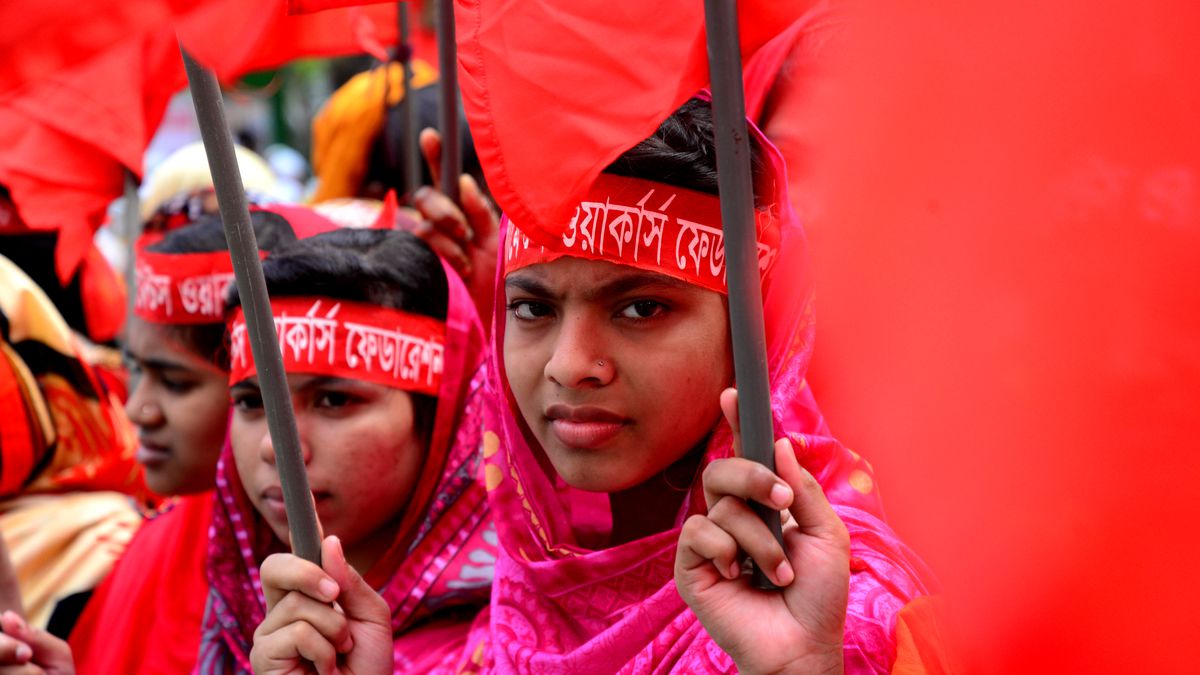|
|
Developmental Biology — Maternal Health
Women's Rights Benefit Entire Community
Nations with strong women's rights have better health and faster growth...
Nations with strong women's rights are likely to have better health and faster growth than nation's that don't protect these values. This is according to research published in the British Medical Journal BMJ Open online.
A trend evident even in resource-poor countries.
While many parts of the world have good economic progress, women's rights are often overlooked. This despite many having signed the international bill of rights for women, known as The Convention on the Elimination of All Forms of Discrimination Against Women (CEDAW).
Researchers wanted to find out if there might be a link between protection of women's rights, and health improvement and sustainable development. Ultimately asking — "Do women's rights have an impact on economic and social, or just civil and political rights?"
Databases holding information on health, human rights, and economic and social rights for 162 countries were analysed for the period 2004 to 2010. Countries were grouped according to how they valued women's economic and social rights.
Analysis of the accumulated data reflects strong economic and social rights associate with "better to improving" health outcomes.
This wasn't the case when evaluating countries based on their women's economic and social rights. Overall, countries with strong women's rights had better and improving healthcare over countries where women's rights are only moderately or poorly respected. Health indicators measured disease prevention methods, including vaccination, reproductive health, rate of deaths and life expectancy. In countries where human rights highly respect women's rights, even when access to hospital beds and doctors was below average, had health care outcomes consistently better than average.
"Results confirm that even with a lack of resources, in a country with a strong human rights structure, health outcomes are better," say the authors of the research.
Countries where civil and political rights alone are highly valued, produced varied levels of success in healthcare. Despite these countries possible respect for economic, social and cultural rights, they did not protect women's economic and social rights. And, as an observational study, health care values were unable to be quantified to establish whether and in what situations those values succeeded or failed. More research is needed over a longer time period in countries with similar human rights outcomes — to pinpoint overall trends.
The research suggests gender equality is not just a women's issue, but a societal issue.
"Today, the value of human rights has often been questioned from an economic standpoint. However, our data finds rather than limit progress, human rights, and women's economic and social rights in particular, can only benefit all of society," conclude the authors.
Abstract
Objective The goal of this study is to assess the correlation between protection of women’s economic and social rights (WESR), health improvement and sustainable development.
Methods A cross-country analysis of 162 countries was employed to assess development, health and human rights of the countries by measuring associated variables. Data sets for the health, human rights and economic and social rights of these countries were from 2004 to 2010. The dependent variables are health and human development and the independent variables are the human rights variables. Regression analysis and principle axis factoring were used for extraction and varimax method for rotation. Country grouping was made using cluster analysis. Potential biases, resulting from measurement differences in human rights values, were eliminated by using z-transformation to standardise variables.
Results Regression results reveal that WESR variable is correlated with the health outcomes. Cluster analysis separated the countries into three clusters, based on the WESR variable. Countries where WESR were ‘highly respected’ (44 countries) are categorised into cluster 1; countries where WESR were ‘moderately respected’ (51 countries) are categorised into cluster 2 and countries where WESR were ‘poorly respected’ (63 countries) are categorised into cluster 3. Countries were then compared in their respective clusters based on health and human development variables. It was found that the countries which ‘highly respected’ WESR had better average health values compared with the second and third clusters. Our findings demonstrate that countries with a strong women’s rights status ultimately had better health outcomes.
Conclusion WESR status has correlation with the health and human development. When women’s rights are highly respected, the nation is more likely to have higher health averages and accelerated development.
This is an open access article distributed in accordance with the Creative Commons Attribution Non Commercial (CC BY-NC 4.0) license, which permits others to distribute, remix, adapt, build upon this work non-commercially, and license their derivative works on different terms, provided the original work is properly cited, appropriate credit is given, any changes made indicated, and the use is non-commercial. See: http://creativecommons.org/licenses/by-nc/4.0/.
Authors
Kamiar Alaei, Sedef Akgüngör, Weng-Fong Chao, Sayyida Hasan, Allyson Marshal, Emily Schultz and Arash Alaei.
Acknowledgements
We are well renowned for publishing The BMJ (mostly referred to as the British Medical Journal) - one of the world’s top four most cited general medical journals with a 27.604 impact factor. (Impact Factors are used to measure the importance of a journal by calculating the number of times selected articles are cited within the last few years. The higher the impact factor, the more highly ranked the journal. It is one tool you can use to compare journals in a subject category.)
Return to top of page.
| |
|
Jul 24, 2019 Fetal Timeline Maternal Timeline News
 Female garment workers rally in Dhaka, Bangladesh. They are demanding six months of maternity leave and protections against sexual abuse in the workplace. CREDIT Getty Images.
|



